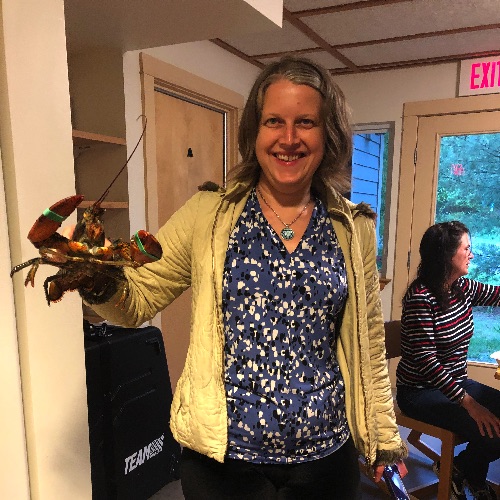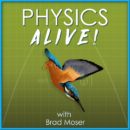The Physics Alive Podcast

Episode #2
Find everything you ever wanted to know about PER on PhysPort with Sam McKagan
What if I told you there is a place where you can discover new teaching methods, access scores of validated assessments, find videos to train your TA’s and LA’s, and even read a guide for how to move a lab course online. And what if I told you it is absolutely free and open access. Don’t believe me? Well it’s true! It’s called PhysPort, and today I’m speaking with Sam McKagan, the director and mastermind behind this website. She shares how it got started and what you can find on the site, as well as current projects that she is involved with, including the Living Physics Portal, a completely open source community for sharing curricular materials to teach physics to life science students.
Today's Guest:
Sam McKagan
Episode Notes and Resources
Most of Sam’s work during her post-doc at University of Colorado Boulder was designing the quantum mechanics PhET simulations and reforming the modern physics. “I thought way more deeply about physics, trying to figure out how the simulations should work, than I ever did in my Ph.D. in physics.”
Attendee’s of AAPT conferences would come up to Sam, knowing she worked in PER, and would say, “Wow, this PER stuff is so cool, so how do I find out more about it so I can use it in my classroom.” Sam created a place for all of this information: PhysPort!
Another great resource that Sam mentioned is Compadre.
If you go onto the PhysPort website, a great place to start is the “Expert Recommendations,” short essays about major topics in PER. These are the questions that people ask most often about teaching with PER.
Multiple resources available for teaching online, especially valuable during the current global pandemic. Includes guidance for being more thoughtful and compassionate in a time of high stress, uncertainty, and even illness for ourselves and our students. For example, an article by Linda Strubbe and Sam McKagan:
“Anybody who’s doing great things in their classroom is an expert on that great thing they are doing.” The PhysPort team is actively looking for people to make contributions.
Some resources about equity in physics are available, but Sam wants to post more. They are reaching out to individuals doing work in that area to write expert recommendation articles. One example is:
- Article: What racial, gender, and sexual orientation bias still exists in physics and what can I do about it?
Looking for validated, research-based assessments to help test students’ conceptual understanding of topics? These assessments are great for TEACHERS, to help them determine if students are really understanding the concepts. What are the areas of your teaching that are working, what are the areas where it’s not, and how can I improve it? These tests are not meant to be used to grade students. They are meant to inform teacher improvement. Checkout the Assessment tab on PhysPort.
Recent publication by Sam et. al. is:
Spoiler alert: One of the famous results of these attitude surveys is that student beliefs about how physicists think about physics and science gets worse from the beginning to the end of the semester. “We’re bombarding the students with so many problems that they don’t have time to think about what the problem means.” So does this mean that taking a physics class is actually more harmful than not taking a physics class at all??
Fortunately, no. In 2013, Sam and colleagues wrote a paper called:
An under-utilized component of PhysPort is a Periscope Collection, a collection of video lessons to use with TA’s and LA’s in a training course.
And finally, a newer project, The Living Physics Portal. An open source website where faculty can share curricular resources dedicated to physics for life science majors.
The Living Physics Portal is a “proof of concept of this idea of promoting open source curriculum sharing and building a community around that.”
Another project using this open source idea is the Energy and Equity Portal, a site for high school teachers teaching energy that are trying to relate it to issues of equity and social justice.
Question for Sam: If you could endorse one piece of PER, what would it be?
There’s a paper that came out in 2020 that she’s really excited about: “Demographics of physics education research” by Stephen Kanim and Ximena C. Cid. This is a study that suggests “physics education research subjects, as a whole, are better prepared mathematically and are from a narrow and unrepresentative subset of our intended target physics student populations.”
- Article: Demographics of PER
She’s also excited about the work of Simone Hyater-Adams and Brian Zamarripa Roman. Other individuals that she recommended are Xandria Quichocho, Katemari Rosa, Geraldine Cochran, Ximena Cid. This, however, is just a small selection, not an exhaustive list. One resource that includes many of these names is a paper summarizing the discussions that People of Color (POC) had during sessions at the 2017 and 2018 Physics Education Research Conference (PERC).
Published on Sept. 23, 2020, just a few weeks after my interview with Sam, was another article authored by Sam et. al, this one in The Physics Teacher:
- Article:PhysPort Use and Growth: Supporting Physics Teaching with Research-based Resources Since 2011
